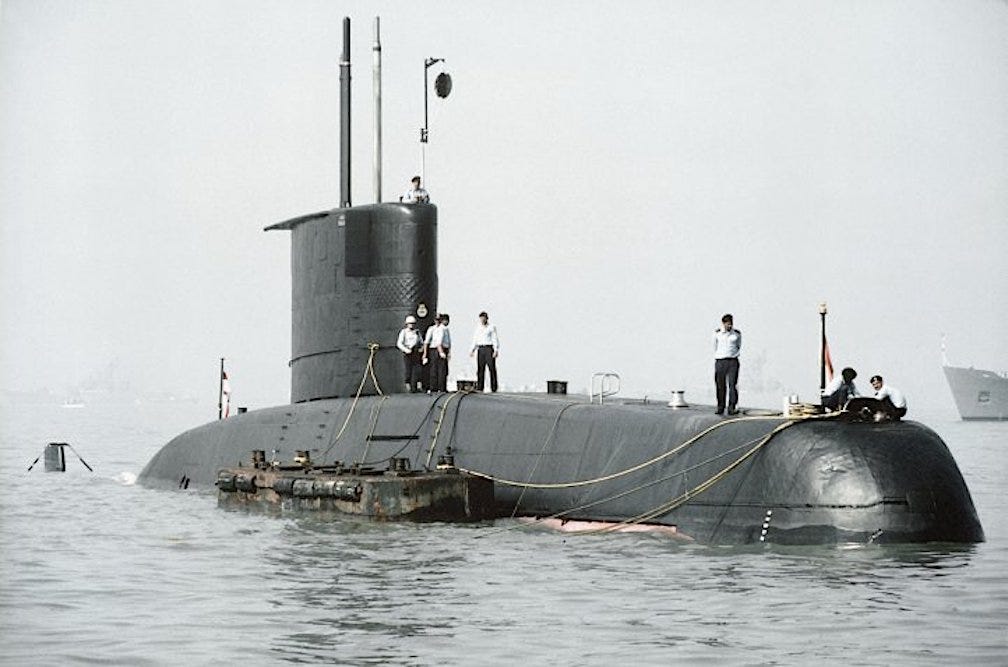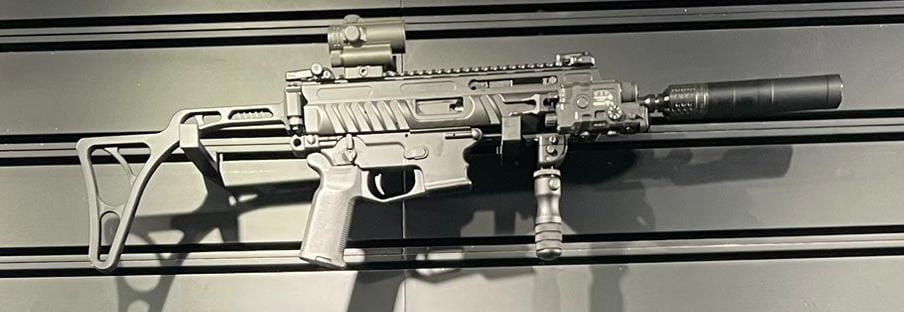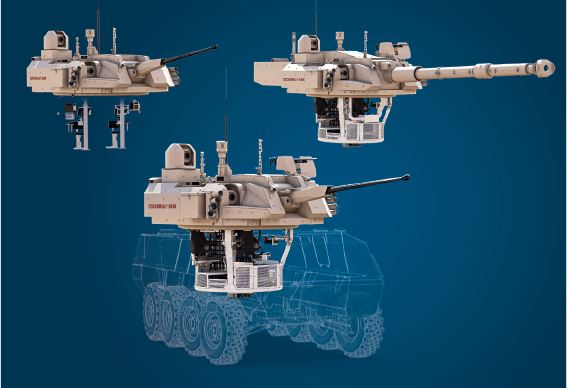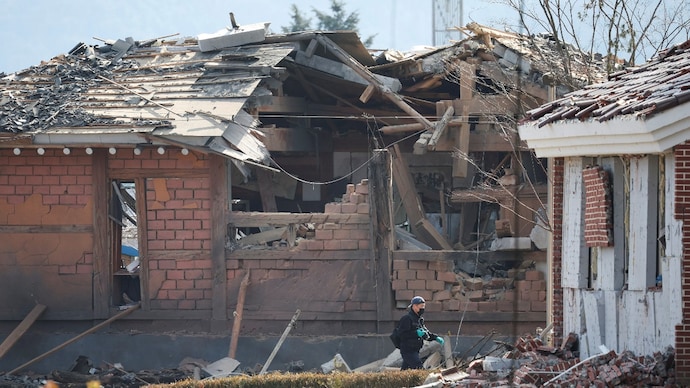SOURCE: RAUNAK KUNDE / NEWS BEAT / IDRW.ORG


In a groundbreaking development, a high-level Defence Ministry committee has accepted the Indian Air Force’s (IAF) recommendation to potentially include 5th-generation fighter jets in the Multi-Role Fighter Aircraft (MRFA) tender for 110 jets, according to sources close to idrw.org, this marks the first time India could see offers for 5th-generation platforms under the MRFA framework, with provisions for some level of Transfer of Technology (ToT) and local manufacturing. While the move signals a strategic leap in India’s air combat capabilities, uncertainties linger over which 5th-generation jets will come with ToT and the establishment of a Final Assembly Line (FAL) in the country.
The MRFA tender, valued at over $20 billion, aims to bolster the IAF’s dwindling squadron strength—currently at 31 against a sanctioned 42—by replacing aging MiG-21s, Jaguars, and Mirage 2000s. Traditionally focused on 4.5-generation fighters like the Rafale, F/A-18 Super Hornet, and Eurofighter Typhoon, the tender’s expansion to include 5th-generation options reflects growing regional threats, notably China’s J-20 stealth fleet and emerging 6th-generation prototypes.
Continue readingSOURCE: RAUNAK KUNDE / NEWS BEAT / IDRW.ORG


In a significant development for India’s aerospace ambitions, French aerospace giant Dassault Aviation is exploring the establishment of a final assembly line (FAL) for its Rafale fighter jet in India, as reported by L’Usine Nouvelle on March 5, 2025. CEO Éric Trappier signaled the move as a strategic response to anticipated large orders from India, stating, “India is preparing major orders, and we could certainly open a final assembly line in that country to be able to absorb this new workload.”
Dassault is already grappling with heightened global demand for the Rafale, a 4.5-generation multirole fighter renowned for its versatility and advanced avionics. The company delivered 36 Rafales to India under a €7.87 billion (approximately $9.4 billion) contract signed in 2016, with all aircraft handed over by 2022.
Continue readingSOURCE: RAUNAK KUNDE / NEWS BEAT / IDRW.ORG


The Indian Navy is gearing up for a significant overhaul of its submarine fleet, with plans to retire its Shishumar-class submarines once newer vessels from Project-75I begin to join the service from 2033 onwards. This strategic decision was highlighted by naval officials in discussions with idrw.org, marking a pivotal shift in the Navy’s underwater capabilities.
Currently, the Indian Navy operates a quartet of Shishumar-class submarines, which are based on the German Type 209 design. These submarines have been a vital part of India’s naval strength since their commissioning between 1986 and 1994.
Continue readingSOURCE: AFI


In a significant leap for India’s maritime defence capabilities, the Indian Navy is set to benefit from a pioneering collaborative research project between the National Institute of Technology (NIT) Rourkela and the Defence Research and Development Organisation (DRDO). This initiative, focused on developing advanced underwater tiles to enhance the stealth of Indian Navy submarines, promises to reduce their detectability by enemy sonar systems, bolstering India’s naval power and advancing its self-reliance in defence technology. With a budget of ?1.4 crore, this project not only underscores India’s commitment to indigenous innovation but also hints at its potential global impact.
Submarines are the silent sentinels of naval warfare, relying on stealth to evade detection and strike with precision. The primary goal of this NIT Rourkela-DRDO collaboration is to develop cutting-edge underwater tiles that can absorb or scatter sound waves, making Indian Navy submarines nearly invisible to enemy active sonar systems. Sonar, which detects submerged objects by emitting sound pulses and analyzing their echoes, is a submarine’s greatest vulnerability. By minimizing acoustic signatures, these tiles could give Indian submarines a decisive edge in contested waters, particularly in the Indian Ocean Region (IOR), where strategic rivalries with China and Pakistan are intensifying.
Continue readingSOURCE: AFI


The Indian Air Force (IAF) is reportedly losing confidence in Hindustan Aeronautics Limited (HAL), the state-owned aerospace giant tasked with producing fighter jets to bolster India’s air power. This erosion of trust, emerging stems from persistent delays, quality concerns, and HAL’s struggles to meet the IAF’s operational timelines—issues that threaten India’s defense preparedness at a time of heightened regional tensions.
With the IAF’s squadron strength dwindling and indigenous programs like the Tejas facing setbacks, this rift signals a critical juncture for India’s aerospace ecosystem. Experts and observers argue that urgent intervention from the Prime Minister’s Office (PMO) is essential to overhaul HAL, ensuring it aligns with the nation’s strategic imperatives under the “Make in India” and “Aatmanirbhar Bharat” initiatives.
Continue readingSOURCE: AFI


In a significant stride toward self-reliance in defense manufacturing, Bengaluru-based SSS Defence has recently unveiled two groundbreaking indigenous firearms: a Submachine Gun (SMG) and a Designated Marksman Rifle (DMR). This development marks yet another milestone for the private Indian firm, which has steadily emerged as a key player in the country’s small arms sector. Known for its innovative designs and commitment to meeting the operational needs of India’s armed forces and law enforcement agencies, SSS Defence is reinforcing its reputation with these latest offerings, unveiled as of early March 2025.
The announcement, highlighted in posts on X on March 2, 2025, underscores the company’s ongoing efforts to innovate and compete with global benchmarks. These firearms are designed to address specific tactical needs: the SMG for close-quarter combat (CQB) and the DMR for precision engagements at extended ranges. By developing these weapons in-house, SSS Defence is reducing India’s reliance on imported small arms and positioning itself as a potential exporter in the global defense market.
Continue readingSOURCE: AFI


India has issued a Notice to Airmen (NOTAM) for a missile test scheduled between March 12 and March 13, 2025, in the Bay of Bengal, signaling another step forward in its robust missile development program. The designated test area spans 415 kilometers, sparking speculation about the nature of the missile to be tested. Defense analysts suggest two likely candidates: a short-range variant of the supersonic BrahMos cruise missile or the highly anticipated Astra MkIII Gandiva, a very long-range beyond-visual-range air-to-air missile (BVRAAM) boasting a range of approximately 350 kilometers.
The NOTAM, a standard aviation alert to ensure airspace safety during such exercises, specifies a 415-kilometer corridor over the Bay of Bengal, a frequent testing ground for India’s missile systems. The range falls within the capabilities of both the BrahMos and the Astra MkIII Gandiva, leaving room for speculation about the test’s objectives. The Indian armed forces have remained tight-lipped about specifics, as is typical ahead of such trials, but the designated distance offers clues about the potential systems involved.
Continue readingSOURCE: IDRW.ORG


Aero India 2025, held in Bengaluru from February 10-14, has solidified India’s trajectory toward redefining modern warfare, with the Indian Army unveiling a suite of cutting-edge unmanned aerial vehicles (UAVs) designed to target individual soldiers. This strategic pivot, showcased prominently at the airshow, signals a game-changing shift for infantry combat—particularly in the context of a potential conflict with Pakistan, which continues to prioritize larger, less agile UAV platforms. The innovations on display underscore India’s intent to dominate the tactical battlefield, leveraging precision, autonomy, and swarm technology to neutralize threats at the soldier level.
Pakistan’s UAV arsenal, bolstered by Chinese and Turkish collaborations, leans heavily on medium-altitude long-endurance (MALE) systems like the Wing Loong II, CH-4, and Bayraktar TB2—platforms optimized for surveillance, precision strikes on fixed targets, and broader operational scopes. While formidable, these larger drones lack the granularity to engage individual infantry effectively in dynamic, close-quarters scenarios. In contrast, the Indian Army’s focus at Aero India 2025 reveals a nuanced approach: small, agile, and lethal drones that promise to transform the infantry battlefield, especially along the volatile Line of Control (LoC).
Continue readingSOURCE: IDRW.ORG


Hyderabad-based VEM Technologies turned heads at Aero India 2025, held at Air Force Station Yelahanka in Bengaluru from February 10–14, with the debut of its Chaser loitering munition. Designed for Intelligence, Surveillance, Tracking, Attack, and Reconnaissance (ISTAR) missions, the Chaser combines advanced sensors, precision strike capabilities, and enhanced maneuverability into a single platform. Showcased as a versatile solution for modern warfare, this indigenous system reflects VEM’s growing stature in India’s defense ecosystem and its alignment with the Aatmanirbhar Bharat (Self-Reliant India) initiative.
The Chaser, displayed in a sleek canister launcher setup, promises to survey, detect, recognize, acquire, and strike a wide range of high-value targets—static or mobile—with minimal collateral damage. With export inquiries already trickling in, VEM Technologies is positioning the Chaser as a global contender in the rapidly expanding loitering munition market.
Continue readingSOURCE: AFI


In a bizarre and eyebrow-raising twist, Pakistani media outlet 24 News HD anchor Mian Tahir has claimed to have obtained a secret report submitted by the Indian Air Force (IAF) to India’s Defence Minister Rajnath Singh.
The alleged document, prepared by the Empowered Committee for Capability Enhancement of the IAF—chaired by the Defence Secretary and comprising high-ranking officials like the Vice Chief of Air Staff, Secretary (Defence Production), Secretary of the Department of Defence R&D, Chairman DRDO, DG Acquisition, and Deputy Chief of the Air Staff as Member Secretary—has not been made public in India. Yet, Tahir boldly asserted that this classified report exposes critical vulnerabilities in the IAF, including an alleged admission of its inability to counter Pakistan due to a depleted aircraft inventory.
Continue readingSOURCE: AFI


In a landmark move for India’s defense manufacturing ecosystem, Belgium-based John Cockerill Defense, the world’s top turret-making company, has signed a joint venture with Indian firm Electro Pneumatics & Hydraulics (India) Pvt Ltd to produce turrets for light tanks. This marks the first time the company will establish a manufacturing facility outside Belgium, with the new plant set to be located in Chakan, Pune. The 60:40 joint venture has been chosen by the Defence Research and Development Organisation (DRDO) and Larsen & Toubro (L&T) to supply turrets for India’s Project Zorawar light tank program.
The collaboration is poised to bolster India’s indigenous defense capabilities, aligning with the “Make in India” initiative. The initial focus will be on manufacturing turrets for the 59 light tanks under Project Zorawar, designed for high-altitude operations. However, the joint venture’s ambitions extend far beyond this scope. Thierry Renaudin, Chief Executive Officer of John Cockerill Defense, emphasized the broader potential during a statement in the national capital: “The joint venture that we have is not limited to just the 59 light tanks. Our reading is that the overall demand will be much higher than 350. Moreover, as the joint venture stabilizes, we will look at other programs of the Indian Army—like the Future Infantry Combat Vehicle (FICV) and the futuristic main battle tank called the Future Ready Combat Vehicle (FRCV).”
Continue readingSOURCE: AFI


The Sukhoi Su-30MKI Flanker and Su-57 Felon, two of Russia’s most prominent fighter jets, offer a revealing side-by-side comparison that underscores both the lineage and limitations of modern Russian aerospace engineering. While the Su-57, Russia’s first fifth-generation stealth fighter, draws clear design inspiration from the Su-30MKI—a 4.5-generation multirole platform tailored for India—it also exposes a deeper narrative: the Russian Aircraft Design Bureau’s apparent inability or unwillingness to break free from the foundational Su-27 architecture of the 1970s.
The Su-57’s lineage from the Su-30MKI is unmistakable. Both aircraft share a canard-delta wing configuration, a legacy of the Su-27’s focus on agility, though the Su-57’s canards are smaller and integrated into its stealth profile. The Felon’s thrust-vectoring nozzles, a defining trait of the Su-30MKI, enhance post-stall maneuverability—a feature prized by Russian designers since the 1980s but less emphasized in Western stealth fighters like the F-22, which prioritize low observability over aerobatics. The Su-57’s wider fuselage and splayed engine nacelles also mirror the Su-30MKI’s layout, adapted to house internal bays and reduce radar cross-section (RCS), estimated at 0.1–1 m² compared to the Su-30MKI’s 20 m².
Continue readingSOURCE: AFI


India’s Defence Research and Development Organisation (DRDO), through its Hyderabad-based Defence Research and Development Laboratory (DRDL), has unveiled the Jammer Anti-UAV (JAU) system—a sophisticated counter-drone technology designed to neutralize unmanned aerial vehicles (UAVs) by targeting their command and control (C2) and navigation links. Capable of spoofing UAV signals to force a crash landing or compel a return to base, the JAU integrates robust Electronic Support Measures (ESM) and Electronic Countermeasures (ECM) capabilities.
The JAU system is engineered to intercept and disrupt the two lifelines of UAV operation: the C2 link, which connects the drone to its operator, and the navigation link, typically reliant on Global Navigation Satellite Systems (GNSS) like GPS or GLONASS. By deploying ESM, the JAU detects and identifies UAV signals across a wide frequency spectrum—commonly 2.4 GHz and 5.8 GHz for control, and GNSS bands like GPS L1 (1575.42 MHz). Once identified, its ECM suite unleashes targeted jamming to drown these signals with electromagnetic noise, severing the drone’s connection to its operator and disrupting its positional awareness.
Continue readingSOURCE: AFI


The Suryakiran Aerobatic Team (SKAT) of the Indian Air Force (IAF) has touched down at Wing 6 of the Royal Thai Air Force, bringing with them a fleet of 12 Hawk Mk 132 aircraft. Renowned globally for their breathtaking nine-aircraft formations, the team is set to perform public displays on March 7 and 8, 2025, as part of the celebrations marking the 88th anniversary of the Royal Thai Air Force (RTAF). As SKAT prepares to paint the Bangkok sky with the vibrant hues of the Indian Tricolor, this event promises not only a visual spectacle but also a reinforcement of the deep ties between India and Thailand.
The Suryakiran team, affectionately known as the “Ambassadors of the Indian Air Force,” arrived in Thailand following an invitation from the RTAF to participate in the milestone anniversary festivities. Established in 1996, SKAT has earned a stellar reputation for its precision, daring maneuvers, and vibrant displays, having performed at airshows across India and internationally. The team’s deployment of 12 Hawk Mk 132 aircraft—advanced jet trainers manufactured by BAE Systems and assembled by Hindustan Aeronautics Limited (HAL)—includes nine for the aerobatic performances and three as spares, ensuring seamless execution of their signature routines.
Continue readingSOURCE: REUTERS


Fifteen people were injured in South Korea on Thursday after bombs dropped by fighter jets landed in a civilian district, damaging houses and a church during military exercises in Pocheon, the Air Force and the fire department said.
The Gyeonggi-do Bukbu Fire Services said in a statement that 15 people were wounded, out of which two were seriously hurt. Pocheon is about 40 kilometres (25 miles) northeast of Seoul, near the heavily militarised border with North Korea.
Continue reading